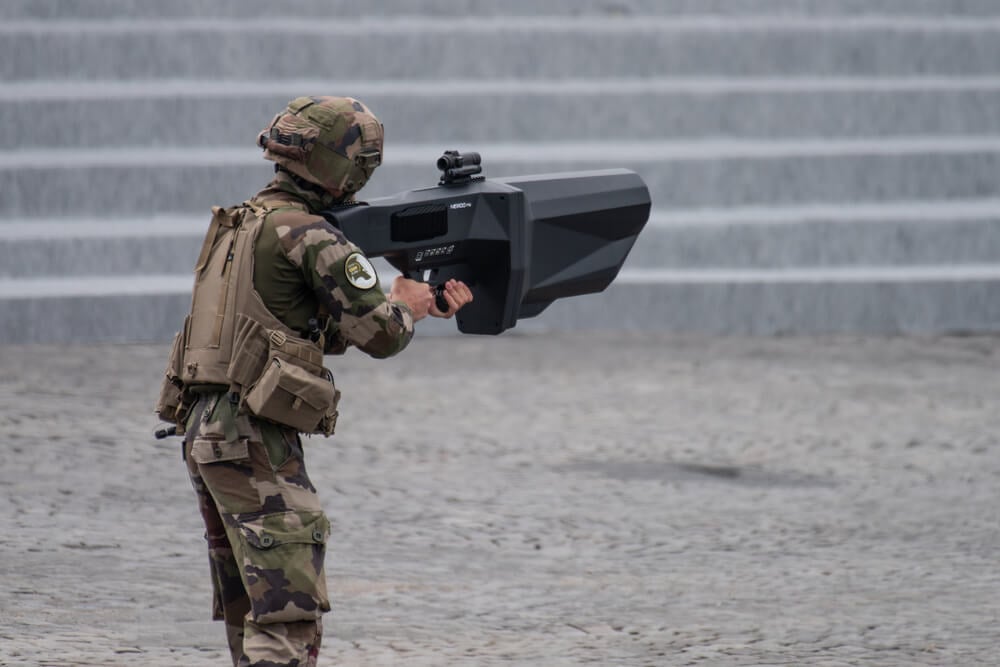Currently, informal summit of the European Union is being held in Copenhagen, where the leaders of the member states discuss security, economic, and political challenges that require swift and collective responses.
Unlike the regular meetings of the European Council in Brussels, this format does not result in formal decisions but addresses topics that will shape the Union's policy in the coming months.
Denmark is hosting at a time when drone incidents in the region have heightened concerns about the security of both civilian and military airspace, and the summit itself has been marked by unusual measures — from a total ban on civilian drone flights during the gathering to the deployment of allied anti-drone capabilities in Copenhagen.
This summit therefore carries broader symbolism: it tests the EU's ability to respond in real time to new threats and to integrate them into a common security strategy.
A new reality has reached the north of the continent
Central to the discussion is the idea of a "drone wall", a continuous network of sensors, jammers, and neutralisation systems along the European Union's most exposed borders.
This level of security measures in a country known for its orderliness and predictability suggests that a new reality has reached the northern part of the continent — and that drones have become instruments of low-cost, high-impact strategic pressure.
The Danish Ministry of Defence announced that drones had been spotted over several military locations
In the days leading up to the summit, the Danish Ministry of Defence announced that drones had been spotted over several military locations, and police had also recorded overflights near infrastructure and airports.
Short-term traffic suspensions at several Danish airports resulted in immediate costs, anxiety, and operational disruptions.
This is already being referred to as a "hybrid attack", not because identity and intent have been proven in a judicial sense, but because the pattern of simultaneous occurrences suggests an organised actor with knowledge and logistical support.
From fighter jets to cheap platforms
This is not an incident confined to Danish borders. In recent weeks, there have been violations of the airspace of NATO member states by drones launched from the direction of Russia's war against Ukraine, which has already led to alarm and flights of fighter jets and helicopters in several countries.
The problem is clear: for decades, the West has optimised defences for expensive threats — ballistic missiles, fighter jets — and drones have dramatically lowered the "entry cost" of attack and reconnaissance.
Where pilots previously had to fly and risk expensive resources, now a drone platform costing several thousand euros, or sometimes even less, can be deployed.
Germany has sent the FGS Hamburg frigate, as part of increased NATO activity in the region
Denmark did not wait. The government imposed a temporary blanket ban on civilian drones during the week of the summit. At the same time, it requested reinforcements to protect the airspace.
Germany has sent the FGS Hamburg frigate, equipped with air defence capabilities and sensors, as part of increased NATO activity in the region.
Sweden and France have announced anti-drone units and additional capabilities. This is a clear signal that the risk is being treated as a security challenge, not merely a policing issue.
A new dimension of cooperation with Ukraine
A plan for a "drone wall" is on the table for European leaders. Supported by the EU's eastern member states, the idea is a layered network of detection, tracking, and interception—a combination of radar, radio-frequency scanners, electro-optical systems, jamming, and, where legally and technically possible, kinetic knockdown (physical neutralisation).
The proposal gained political weight after Russian drones penetrated Polish airspace and caused a series of incidents in the north; now, for the first time, it has reached the centre of the agenda at an EU summit.
The details of financing and the command-operational structure have not yet been finalised, but the political decision to develop the project has already been made.
Ukraine, under constant wartime pressure, has developed methods that combine improvisation, speed, and analytical data processing, all at a pace far exceeding slow Western procurement procedures
Within that framework, a new dimension of cooperation with Ukraine has emerged.
Kyiv has announced it will send a team to Denmark to share knowledge gained during the three-year drone war — from combat tactics and ground deployment to mass production and software system development.
For Europe, this is valuable because Ukraine, under constant wartime pressure, has developed methods that combine improvisation, speed, and analytical data processing, all at a pace far exceeding slow Western procurement procedures.
A new type of political communication
What is Denmark actually doing, and why is it important for everyone?
Denmark's ban on civilian drones has removed some uncertainty over sensitive locations and, with allied support, has set a model for other countries to follow.
This raises an essential question: how should European airspace be organised at a time when cheap aircraft are becoming tools of coercion?
In Copenhagen, the discussion is not only about sensors and jammers but also about legal frameworks, chains of command, interoperability, and the boundary between police and military action.
Who decides to shoot down a drone near a civilian airport? What accelerated procedure is used to decide how to neutralise a drone, and who is held responsible if a mistake occurs? How can national air traffic regulations be harmonised with the reality of cross-border operations and potential provocations?
 When the public sees that the airport is closed because of a drone, the instinct is to be upset and to question whether the state is capable of controlling the airspace above its own capital
When the public sees that the airport is closed because of a drone, the instinct is to be upset and to question whether the state is capable of controlling the airspace above its own capital
These are issues that have remained theoretical for years, but now they are being addressed with specific deadlines and obligations.
The economics of "asymmetric cost" will be a key obstacle. Defence against inexpensive platforms is expensive. Effective jamming and interception require constant readiness.
If the EU adopts a "drone wall," it must avoid the trap of spending billions on neutralising platforms that cost only tens of thousands.
The solution is not a single "silver bullet". In practice, this means a combination of zoning and bans during high-risk periods, affordable passive and RF sensors where possible, rapid data exchange between the police, civil aviation, and the military, and, only as a last resort, expensive kinetic systems at critical points.
Otherwise, Europe will impose a fiscal burden on itself that its opponent can increase with relatively small investments.
The Danish example also reveals a new type of political communication that is likely to become commonplace.
The message is that the EU seeks to avoid escalation but will prevent a permanent "blurring" of the airspace over its cities and bases.
It is also a signal to the domestic public: the measures are unpleasant but temporary and targeted.
When the public sees that the airport is closed because of a drone, the instinct is to be upset and to question whether the state is capable of controlling the airspace above its own capital.
By pre-emptively banning all civilian drone flights during the summit, Copenhagen has shown it is willing to accept the political and practical consequences of such a decision to reduce risk, relying on allied capabilities that further decrease the likelihood of a serious incident.
From an ad hoc approach to a routine one
Ukraine is an integral part of the broader picture at the European level. As the EU considers using proceeds from frozen Russian assets for a Ukrainian loan and further tightening energy channels, drones become a daily reminder of a war that has shifted from the geographical frontline to the mental space of European capitals.
In this respect, the "drone wall" is not only a technical solution; it is an attempt to create psychological stability—a prerequisite for the political decisions that follow.
Without reducing the sense of vulnerability above capital cities and hubs, it will be more difficult to make decisions that entail fiscal and diplomatic risk.
How sustainable is all this? In the short term, it is, as these are limited periods of high risk and targeted resource allocation.
In the medium term, the system must shift from an "ad hoc" approach to a routine one.
This requires Europe to standardise procedures, ensure joint procurement, and accelerate regulatory processes for anti-drone technologies.
By adopting a common system—a shared data network, standardised sensors that each country can integrate, and joint training—security costs would be distributed and significantly reduced across all countries
If the response remains limited to temporary bans and one-off deployments, the system will be costly and ineffective.
By adopting a common system—a shared data network, standardised sensors that each country can integrate, and joint training—security costs would be distributed and significantly reduced across all countries.
The involvement of Ukrainian teams in Denmark also highlights this: rapid iteration of tactics and techniques can shorten the learning curve that has previously cost Europe time and money.
The risk of escalation persists. The more incidents occur, the greater the likelihood of a misjudgement or of assigning responsibility to the wrong party.
In such a scenario, the aim is to wear down the other side with a series of minor incidents, occasionally testing more sophisticated platforms.
The response cannot be purely technical; it must include a clear threshold for when an incident escalates into a hostile campaign and predetermined measures that are implemented without media drama. This is where a stable strategy differs from reactive improvisation.
A "test drive" for European security
For Tomorrow's Affairs, the most important question is: has Denmark just outlined a European doctrine against cheap threats?
Based on current observations, it appears so. Three elements form the core.
 The way forward involves the careful development of networks, procedures, and trust among actors who have not traditionally shared the same chain of command
The way forward involves the careful development of networks, procedures, and trust among actors who have not traditionally shared the same chain of command
The key is the political willingness to impose temporary restrictions on civilian drones when risks are high, to rely on allied resources to quickly fill gaps in national capabilities, and to turn Ukraine's wartime experience into a permanent European security standard.
This is why the Danish week is more than an isolated incident. It serves as a "test drive" for European security at a time when cheap platforms can have costly political consequences.
The way forward is neither spectacular nor attractive for the media. It involves the careful development of networks, procedures, and trust among actors who have not traditionally shared the same chain of command: civil aviation authorities, police, intelligence services, and the military.
If Copenhagen makes a clear decision to make the "drone wall" a concrete programme with deadlines, a budget, and a division of responsibilities, the northern part of Europe will be recognised as the place where Europe stopped being a bystander and became the director of its own security in the drone era.